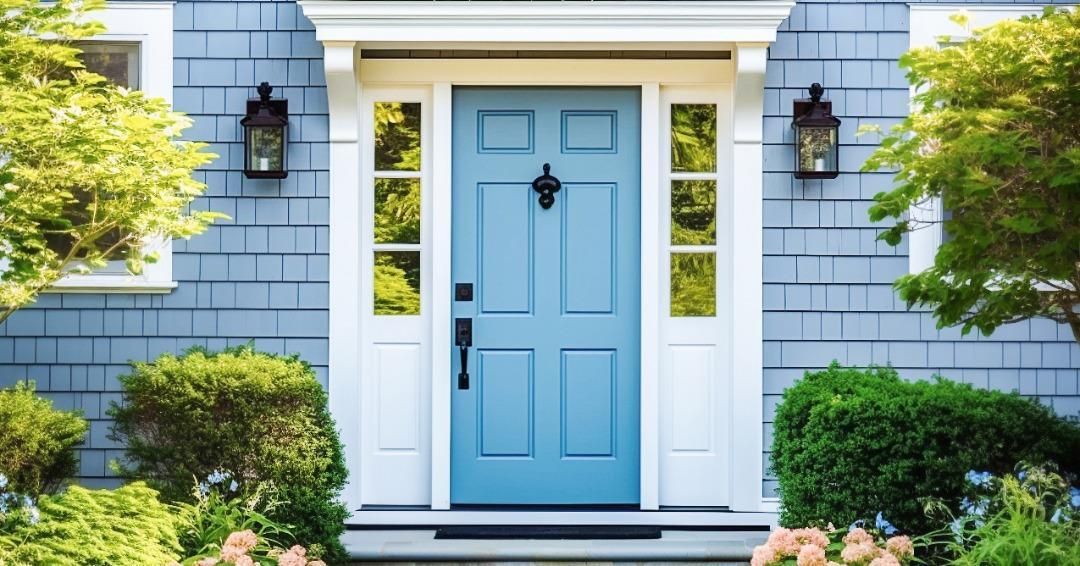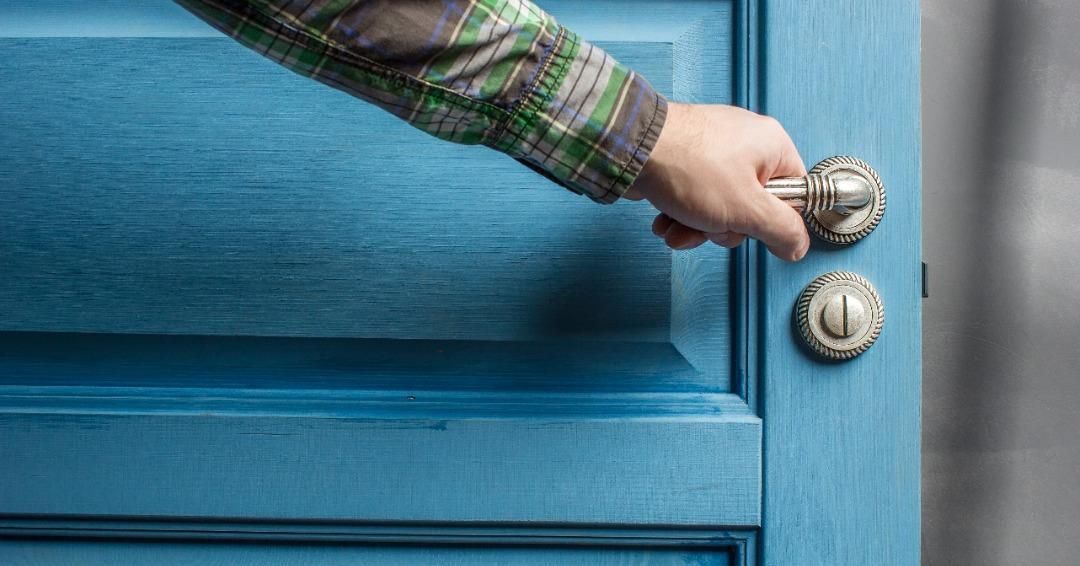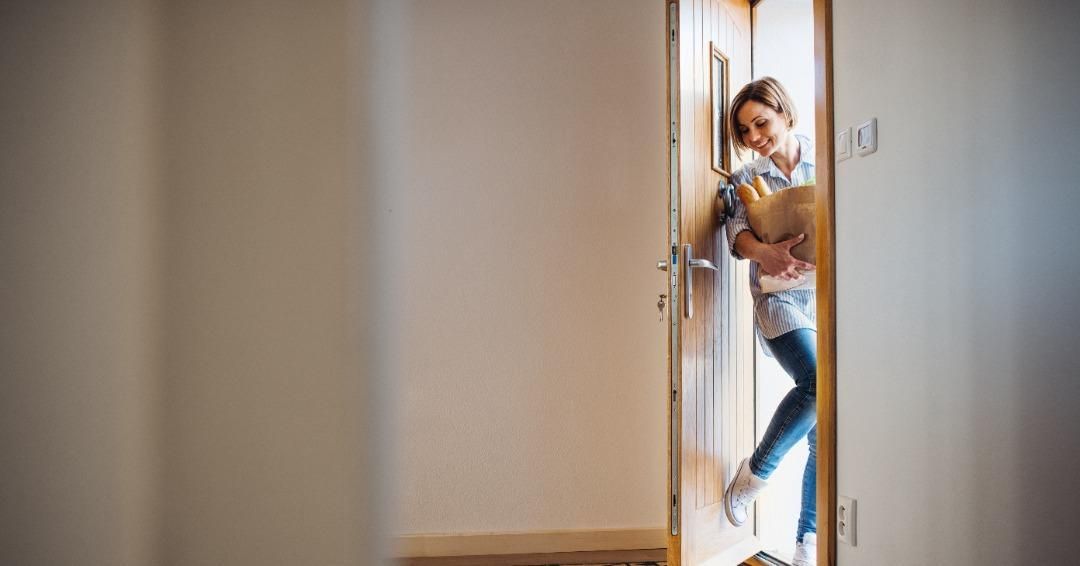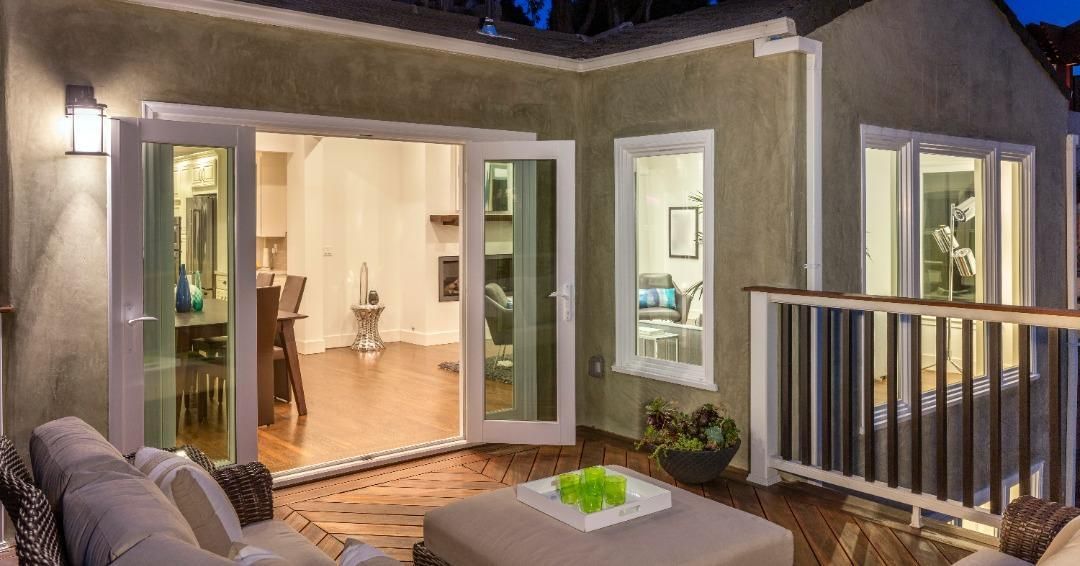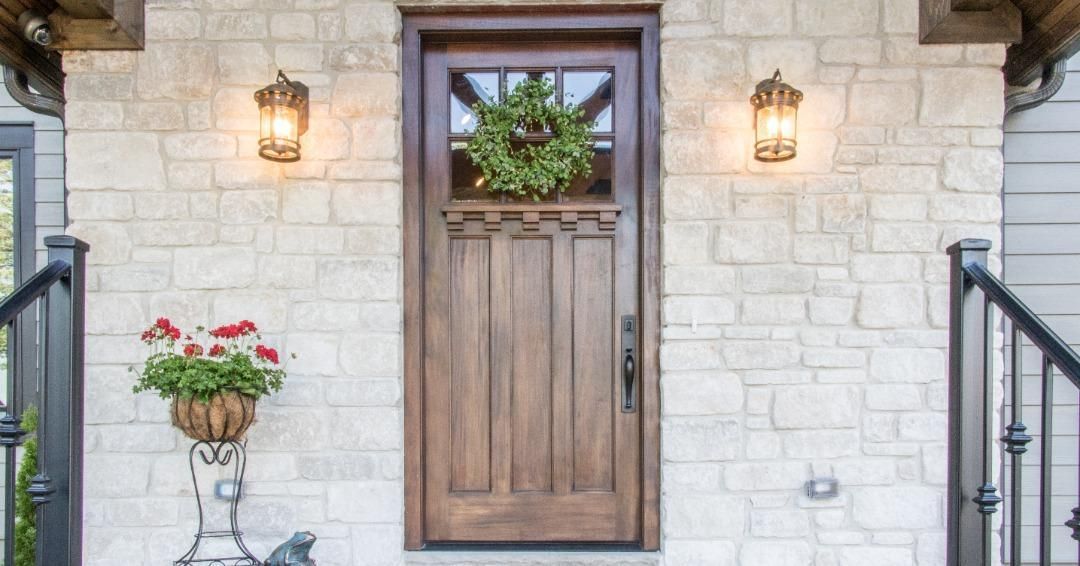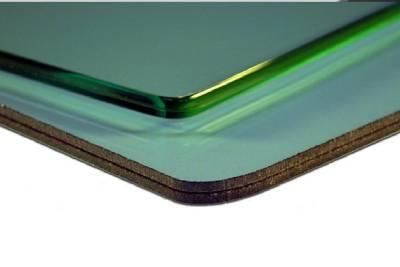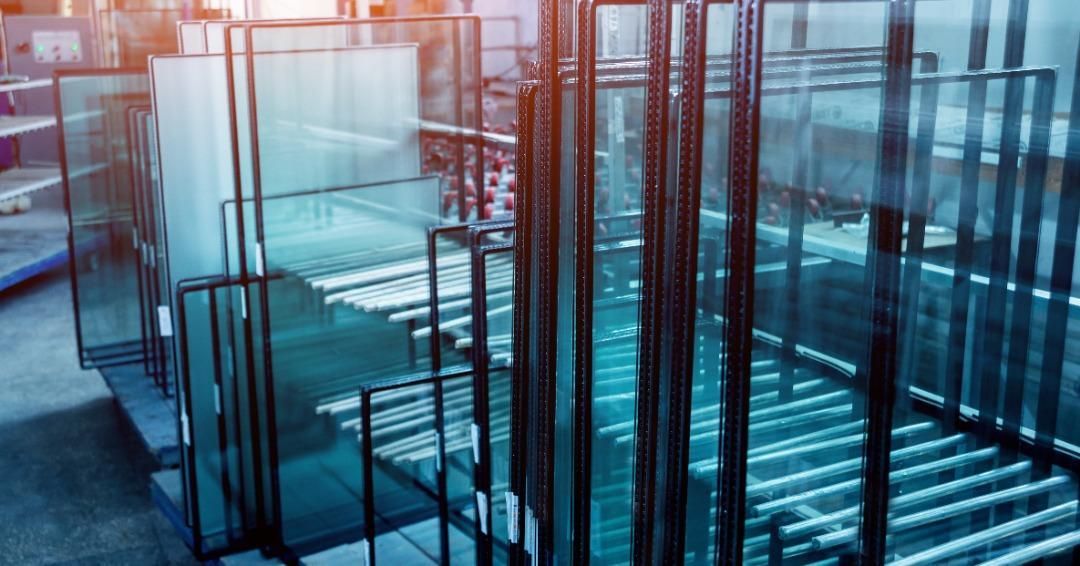How Having A Properly Installed Door Helps Keep Electric Costs Down
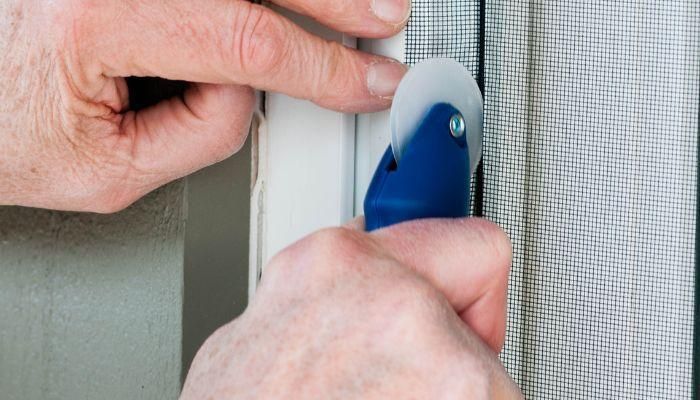
We all know how expensive electricity bills can be, but did you know that a properly installed door could help keep your electric costs down? It’s true – if you want to save money on energy expenses and make sure that your home is snug and secure, then an efficient door installation should definitely be at the top of your list.
Picture this: it’s wintertime in your city. You’ve got the thermostat set high enough to get comfortable inside, but outside there’s icy wind gusting through gaps in old doors and windows. That means all the warm air from inside is seeping out into the cold night – and so are those precious dollars of yours! But with a correctly fitted doorway, you won’t have to worry about any chilly drafts or wasted energy.
When it comes to protecting yourself from rising electricity costs, having a well-installed door really pays off. Not only will it create a barrier against heat loss during colder months, but also provide peace of mind knowing that intruders won’t be easily able to gain entry into your home. In other words, proper door installation gives you two great reasons for keeping those electrical bills low – warmth and security.
The Benefits Of A Properly Installed Door
Having a perfectly placed portal is paramount to keeping electric costs down. Properly installed doors provide protection against unwelcome intruders, as well as preserving the environment and saving money on energy bills. Not only are these benefits significant, but they’re also super simple!
Savvy shoppers can select an airtight door that keeps out drafts along with uninvited guests. This helps to maintain comfortable temperatures inside while preventing cold winter winds from entering your home or business. Additionally, it reduces the amount of energy needed to heat the building since less energy escapes through cracks in the door frame. On top of all this, properly insulated doors reduce outside noise pollution too!
By investing in a proper door installation today, you not only increase safety for yourself and others but also save money on electricity bills. Plus, there’s peace of mind knowing you’re doing your part for environmental sustainability. With all these advantages combined together, having a correctly positioned door makes perfect sense when it comes to reducing electric costs – no matter if you’re at work or at home! Seamlessly transitioning into improved energy efficiency due to poor door installations is just one step away…
The Impact Of Poorly Installed Doors On Energy Efficiency
When it comes to energy efficiency, the impact of a poorly installed door cannot be understated. From rising electric bills to decreased air quality, inadequate installation can have serious consequences; not least of all is its effect on your wallet! As such, it’s important to understand how having a properly fitted entryway can help keep costs down.
Let’s start with temperature control. A well-fitted door will prevent warm or cold air from escaping and entering your home; this in turn means that heating and cooling systems don’t have to work as hard (or stay on for longer) in order to maintain comfortable temperatures. This translates into lower electricity bills and less money spent over time – something we could all benefit from!
But there are other benefits too: if you live near a busy road or main thoroughfare then an incorrectly installed door may allow traffic noise inside; taking away from the peace and quiet that you deserve during those precious moments of relaxation at home. Subsequently, opting for good-quality products paired with professional installation ensures that unwanted sound stays where it belongs – outside.
So when considering ways to save money on electricity bills, ensuring that your doors are securely fitted should be at the top of your list. Not only does this guarantee better thermal insulation but also provides much needed acoustic protection against external noises. In short, investing in proper installation now pays off exponentially further down the line.
Understanding The Different Types Of Doors
The proverb ‘A stitch in time saves nine’ is true when it comes to understanding the different types of doors. It pays off to take the time and do a bit of research before installing one, as having the right door can make all the difference when trying to keep electric costs down.
Wooden doors are often preferred for its aesthetic appeal, but they need regular maintenance like sanding and repainting every few years. Metal core fire-rated doors provide great insulation against heat loss and sound, but these require sturdier frames than wooden ones which may impact cost. Vinyl or fiberglass composite doors have good durability and are affordable if you’re on a budget.
No matter what type of door you choose, proper installation plays an important role in keeping energy bills low. Incorrectly fitted gaps between the frame and wall allow air infiltration through cracks that diminish the insulating properties of your door. This means more money spent cooling or heating your home unnecessarily – something that could easily be avoided with a correctly installed door!
Common Problems With Installing A Door
Installing a door is like putting together a puzzle—it’s complicated and requires careful precision to get it right. It can be tempting to cut corners or rush the process, but this often leads to common problems that could cost you more in the long run. For starters, if you don’t measure correctly, you could wind up with an ill-fitting door that won’t properly latch shut and could result in wasted energy from drafts seeping through gaps. You also need to make sure your hinges are aligned so the door opens smoothly without sticking or squeaking; otherwise, it will have difficulty closing tightly against its frame.
These issues are not only annoying but can end up costing extra time and money if they require additional attention down the line. So take some extra time upfront when installing a door—it may seem tedious now but ultimately saves on energy costs in the future. Speaking of preparing for installation, there are a few important steps…
Preparing For Door Installation
When it comes to installing a door, proper preparation is key. Preparation involves doing research on the type of materials you’ll need for your particular project and ensuring that your tools are all in good working order. Plus, there’s measuring the doorframe accurately—a crucial step if you want the installation to be successful.
Once you have everything ready to go, start by removing any existing hardware from the old door or frame. Make sure you keep track of all screws so nothing gets lost during this process! Afterward, take time to carefully inspect the walls and floor around where the new door will be installed; check for cracks or other potential weak points that could cause problems down the line.
TIP: When selecting a new door, consider an energy-efficient option which can help reduce electric costs over time. This is particularly important if temperatures in your area vary greatly throughout the year. Investing in a well-insulated door with quality weather stripping may pay off significantly in terms of both comfort and cost savings!
How To Choose The Right Door For Your Home
Did you know that up to 40% of a home’s energy can be lost through inefficient doors? So it’s important to choose the right door when installing one in your home. With so many options out there, it can make deciding which one is best for you overwhelming!
In order to select the right type of door, first consider your budget and what kind of insulation you want. You’ll want something durable but also cost-effective. If you live in an especially cold climate, then investing in an insulated steel door may be worth considering since they are more energy efficient than wooden ones. Also look at the warranty period offered by different companies on their products; this way you can rest assured knowing that any issues with the product will be addressed within a given time frame.
Next, take into account how often the door will need to open or close throughout the day since this impacts its durability over time. If it’s going to get used frequently, such as for entry ways or garage doors, then opt for stronger materials like wood or metal rather than vinyl or glass – these materials are better able to withstand wear and tear due to heavy use. Finally, always double check measurements before purchasing a new door – otherwise you might end up with one that doesn’t properly fit your opening!
With careful consideration and research beforehand, selecting the perfect door shouldn’t be too difficult. Now let’s move onto key considerations when installing a door…
Key Considerations For Installing A Door
Choosing the perfect door for your home is a critical component of keeping electric costs down. It’s important to consider key factors when it comes to installing a door, from the materials you use to the type of insulation that fits your needs.
To start, selecting a sturdy material for your door is paramount; opt for something durable and reliable. Metal doors are strong and secure while also being able to handle swings in temperature; wood or fiberglass might be more aesthetically pleasing but can warp over time due to weather exposure. Additionally, think about what style of door would look best with your house: sliding, swinging, bi-folding? All these options offer different levels of security and energy efficiency.
Beyond this selection process, there’s another factor at play — insulation. This helps keep out drafts and maintain consistent temperatures within the space so less electricity has to be used for heating or cooling purposes. The higher the R-value (resistance value) rating on the insulator, such as foam board or spray foam, the better protection against heat loss will be provided. With all these elements combined together properly, you’ll have an efficient doorway that keeps electric bills low!
The Advantages Of Professional Door Installation
When it comes to door installation, there are plenty of advantages that come with hiring a professional. While DIY can be an affordable option for some projects, the truth is that when it comes to door installation, there’s no substitute for experience and expertise.
Take energy efficiency as an example. Installing a new door in your home or business can drastically reduce electric costs by creating an airtight barrier between inside and outside temperatures. But if you don’t have the right tools and know-how to install it properly, those savings won’t happen – no matter how much money you save on materials. Professional installers use specialized techniques such as weatherstripping, caulking and insulation to ensure every gap is sealed tight. It’s like trying to plug up all the little holes in a leaky boat so that none of the precious cargo goes overboard!
A professionally installed door also offers many benefits beyond just energy savings – from superior security features to improved aesthetics. Your installer will make sure everything fits perfectly into place before giving you their stamp of approval, guaranteeing lasting satisfaction with your purchase long after they leave the job site. From start to finish, working with an experienced contractor ensures quality results without any costly surprises down the line.
These advantages demonstrate why professional installation should always be called upon when installing doors – regardless of whether its residential or commercial property. Now let’s look at some tips for improving this process even further…
Tips For Improving Door Installation
When it comes to saving energy costs, proper installation of a door is key. In fact, according to the U.S Department of Energy, up to 30% of your home’s total heating and cooling energy can be lost through an improperly-installed door! This makes having professionally installed doors essential for reducing electric bills.
So what are some tips you should follow when installing a new door? First off, making sure the opening is properly sealed around the edges will help prevent air leakage. Also, checking that weatherstripping has been correctly applied on all four sides of the frame as well as at the meeting point between two doors (if applicable) will ensure efficient insulation throughout your home. Additionally, weatherproofing materials such as caulk or foam sealant can also be used along with weatherstripping to further improve insulation levels in the area surrounding your newly-installed door.
And finally, remember that windows must also be properly fitted into their frames in order to avoid heat loss from drafts – so keep this in mind when preparing for any future installations too! Taking these steps during installation can go a long way towards helping reduce electricity costs over time – which makes professional installation even more important. With these simple measures taken care of ahead of time, you’ll be able to enjoy greater comfort and savings in no time at all!
How To Reduce Heat Loss Through Doors
Many people think that installing a door is enough to keep electric costs down, but this isn’t the case. Sure, having a properly installed door helps prevent heat transfer from outside to inside and vice versa. However, if you don’t take steps to limit air infiltration through the door’s edges, then your energy bills will still be higher than they need to be. That’s why it’s essential to understand how reducing heat loss through doors can help minimize your electricity bill!
To reduce heat loss through doors, weather stripping should be used around all four sides of the door frame where it meets the wall or floor. This will create an airtight seal and stop any unwanted drafts from entering or exiting your home. Additionally, switching out single-pane windows for double-pane ones can also improve insulation and lower heating costs further.
If you want to maximize efficiency in your home and cut down on energy consumption even more, make sure you invest in quality weatherstripping products for use around your doors and windows. Not only does this save money by preventing costly energy losses throughout the year—it also adds comfort by creating better temperature control indoors too! TIP: When replacing old weatherstripping with new one, start at the top of the door frame rather than beginning at ground level as this ensures maximum coverage of gaps when complete.
The Role Of Weather Stripping In Keeping Electric Costs Down
Weather stripping is the unsung hero of energy efficiency. It can be the difference between feeling like you’re in an icebox and a comfortable, warm home. Installing weatherstripping around your doors helps keep electric costs down by reducing heat loss throughout the year. Think of it as a sealant that prevents air from seeping out through cracks and crevices.
Like a ship navigating treacherous waters, having weatherstripping can save you from potential disaster when winter inevitably comes knocking at your door – or should I say window? The savings are real: according to Energy Star, properly installed weatherstrips can reduce heating bills up to 10%. That’s money right back into your pocket!
It’s easy to forget about these small details until they become big problems; but with proper preventative measures such as installing weatherstripping on all exposed edges (especially around windows), we’re one step closer to maximum efficiency. Let’s take our journey further and explore how to insulate doors for optimal performance next.
How To Insulate Doors For Maximum Efficiency
Insulating a door for maximum efficiency is like wearing a warm coat on chilly days. It keeps out the cold air and helps you stay cozy, just as insulation does with your home. Door insulation can help reduce electric costs while still allowing light to come in and ensuring privacy.
Much of the heat that escapes from our homes comes through doors, particularly if they’re old or not properly installed. Weather stripping along the sides of the door will prevent cool air outside from entering the house, while also keeping heated air inside where it belongs. The weather stripping should be replaced annually to ensure it remains effective at blocking drafts and preventing heat loss. Additionally, installing an insulated core door will further increase energy savings by providing additional insulation against outdoor temperatures. This type of door is especially beneficial during winter months when heating bills tend to spike due to increased use of space heaters and other electrical appliances.
When selecting a new door for maximum efficiency, consider its material composition as well as any hardware features such as double-glazed windows or deadbolts that may provide added protection against drafts coming into the home. You’ll want something sturdy enough to withstand exposure to elements yet lightweight enough so that it won’t strain your energy bill too much either! With proper installation and maintenance, insulating a door can make all the difference in reducing electric costs over time – so don’t skimp on quality materials or craftsmanship!
Choosing The Right Door Hardware
It is essential to have the right door hardware when it comes to keeping electric costs down. After all, not just any type of hardware will do! From hinges to locks and handles, there are several components that make up a properly installed door. That’s why choosing the right hardware for the job can be so important.
Fortunately, there are lots of options available on the market today that provide high performance and long-lasting durability at an affordable price. For example, some manufacturers offer heavy-duty steel locksets with corrosion resistant finishes while others specialize in deadbolt systems with extra security features such as keyed entry or electronic access control solutions. No matter which one you choose, having quality materials and reliable construction is vital if you want your door to last longer and perform better over time.
The bottom line is: selecting appropriate hardware for your doors can lead to cost savings in the long run due to improved efficiency and lower energy bills. Now that we’ve covered how to select good door hardware let’s move onto maximizing the benefits of a properly installed door.
Maximizing The Benefits Of A Properly Installed Door
Maximizing the benefits of a properly installed door is key when it comes to saving money on electric costs. With just one simple change you can drastically reduce your energy bills and help the environment at the same time. Here are some points that will show why having a well-fitted door is so important:
Firstly, an ill-fitting or poorly sealed door lets in more drafts than necessary, meaning less insulation against cold air and increased spending on heating. Secondly, gaps around doors allow outdoor pollen and allergens into the home– creating extra work for air conditioning filters to keep them out of your indoor spaces. Lastly, if not fitted with weatherstripping, these openings invite insects like mosquitos inside as well!
Making sure your entryways are securely closed up is vital for keeping costs down and maintaining good health indoors. Not only does this provide much better insulation from outside elements, but it also creates fewer opportunities for bugs to enter– preventing long hours spent cleaning up after their messes. Through proper installation and maintenance of doors, homeowners can ensure they’re getting all the savings possible on their energy bills while avoiding costly repairs or replacements due to pests.
The Bottom Line: Why Having A Properly Installed Door Helps Keep Electric Costs Down
Have you ever wondered why having a properly installed door is so important? Sure, it can make your home look better, but what about its impact on electric costs? Well, the bottom line is that this simple step can have a huge effect on how much money you spend on energy.
It’s all about insulation. When an entryway isn’t sealed correctly, warm air escapes from inside and cold air sneaks in. This creates an imbalance of temperatures which forces HVAC systems to work harder than usual to regulate them. And when they have to do more work, electric bills skyrocket! That’s why securing doors well is key for keeping those costs down.
On top of making sure that your doorway is effectively insulated against drafts however, there are other ways to ensure maximum efficiency too – such as installing weatherstripping or using heavy curtains. There’s no denying that taking the time to check up on your door will pay off in the long run; not just by saving money but also providing comfort during any season.
Conclusion
Having a properly installed door can make a huge difference in keeping your electric costs down. It’s important to take the time to research the various types of doors available, know how to tell if they are properly insulated, and consider any special considerations for installation in extreme weather climates. Ultimately, having a professional handle this task is usually advised as it will ensure that your door is secure and energy efficient.
Plus, with anachronisms like “time-tested” techniques being employed by professionals such as DFW Door Repair, you can have peace of mind knowing that you’re getting the most bang for your buck when it comes to installing your door. At the end of the day, investing in efficiently installed doors helps reduce wasted energy and keeps more money in your pocket—and who doesn’t want that?
All things considered, taking the time to install or replace existing doors with newer models can help lower monthly electricity bills significantly. The key is understanding what type of door works best for you and making sure it’s professionally installed so that all its features work optimally—saving you both time and money!
FAQs
How Much Does It Cost To Have A Door Professionally Installed?
Installing a door is one of the most important investments you can make for your home – but it can be hard to know how much it will cost. It’s not as simple as just buying and installing a new door; there are several factors that go into getting the job done right, including having the door properly installed. So, what does it take to get your door professionally installed?
The cost of professional installation depends on many different things – from the type of door you choose to any additional features or accessories you may need. First, there’s materials: You could opt for wood, metal, vinyl or fiberglass doors in various sizes and styles. Then come hardware costs like hinges, handles and locksets which must also be taken into consideration when budgeting. Finally labor costs should factor in too – hiring a skilled technician who knows exactly how to install each component correctly is essential if you want the job done right (and save money on electric bills).
When considering these three elements of installation fees, here are some key points to consider:
- Materials: Think about quality vs price. Investing in higher-quality materials could reduce energy bills over time due to better insulation capabilities while still being within budget.
- Hardware: Make sure all components match up with your chosen material so they don’t clash visually and function well together.
- Labor: Find an experienced installer who understands local building codes and has experience working with various types of doors. This will ensure proper installation and help cut down on unnecessary energy loss through air leaks around the edges of the frame or gaps between panels.
No matter what kind of door you decide upon – whether it’s wooden or metal – having it professionally installed by someone who knows what they’re doing is vital for ensuring maximum efficiency when keeping electricity costs low. Doing this research beforehand ensures that you end up with both a beautiful looking entryway and lower monthly energy bills!
What Are The Differences Between The Various Types Of Doors?
When it comes to the various types of doors, there are a lot of options available. From sliding glass doors to metal security doors, each type of door offers different benefits when properly installed. It’s important to make sure you pick the right one for your needs in order to get the most out of it and ensure that electric costs stay low.
Let’s start with sliding glass doors. These offer great views from inside but don’t provide much insulation or protection from noise or intruders. On the other hand, steel security doors can be incredibly strong and secure if they’re installed correctly. They also have excellent sound insulation properties which helps keep energy costs down by keeping warm air inside during winter months or cool air in during summer months.
The best option for keeping electric costs as low as possible is usually a combination of both types – using a steel security door on the outside with an insulated sliding glass door on the inside. This way you’ll have all the advantages of both styles without sacrificing any safety features or comfort levels. Plus, having a professionally-installed door will help ensure everything fits securely so you won’t have unnecessary gaps around the edges that could lead to higher energy bills over time.
How Do I Know If My Door Is Properly Insulated?
I’m often asked by friends, family and clients about how to know if their door is properly insulated. It’s an important question as having a well-insulated door can help keep electric costs down in the long run.
My first thought when I hear this question is that it’s not always easy to tell whether or not your door has been properly installed. In most cases, you need the expertise of a professional who knows what they’re doing – someone with the right experience and knowledge to make sure everything is done correctly. However, there are some things we can do ourselves to check for insulation quality.
For starters, examining the weather stripping around your doors and windows will give you an indication as to how much air leakage there may be. If you find gaps between the weather strip and your window/door frame then these should be filled in order to reduce any heat loss from outside temperatures entering into your home. Additionally, looking at the actual frames themselves can reveal signs of warping or damage which could lead to increased energy bills due to poor sealing capabilities. Finally, making sure all cracks and crevices leading outdoors are sealed off properly will also help minimize potential electricity losses over time.
So while it might take some effort on our part to ensure our doors are providing us with adequate insulation, it’s worth taking the time in order to maintain lower electric costs down the road! Taking small steps like adding weather strips or checking for drafts can go a long way towards achieving more efficient heating and cooling throughout our homes.
Are There Any Special Considerations For Installing A Door In A Climate With Extreme Weather?
When installing a door in an area with extreme weather, it can be tempting to think that any installation will do. But even if you have the job done by professionals, there are still special considerations to make sure your energy costs stay low and your family stays safe.
First of all, extreme weather means a lot more wear-and-tear on the door over time. For example, hot climates may cause warping or rotting of wood doors due to high humidity levels, while cold climates might require extra insulation materials like foam board and caulk around the frame for a better seal against drafts. That’s why it’s important to know what type of climate conditions you live in before selecting a material for your door—wood, metal, fiberglass—that is best suited to handle those temperatures without too much maintenance overtime.
Additionally, depending on where you live, local building codes might also dictate certain requirements when it comes to installing a door in extreme temperature climates. For instance, regulations may mandate additional reinforcement measures such as steel frames and impact-resistant glass or plastic windows for areas prone to hurricanes or other severe storms. It’s always good practice to check up on these rules with local government offices so that no matter which professional installer you hire they adhere strictly to any applicable laws.
By taking into account both the type of material used for the door and making sure that all installations meet local regulations one can ensure not only safety but significant savings on electric costs down the road!
Is Door Installation A DIY Project Or Should It Be Left To The Professionals?
Well, the answer to this question is not as clear-cut as one might think. On one hand you could definitely try your hand at a DIY door installation project but on the other it may be almost impossible, depending on the type of climate and weather conditions in your area. This is where an idiom comes into play – ‘it’s better to be safe than sorry’.
That being said, if you live in a place with extreme temperatures or frequent storms then attempting a do-it-yourself door installation job could end up costing more than hiring a professional contractor. If you don’t get it right first time round, it’ll cost you extra money to repair any mistakes made along the way. Furthermore, many entry doors come with warranties that are only valid if they are installed by licensed contractors; so if something goes wrong down the line, you’re stuck.
So while saving money is great, there can be some serious consequences when it comes to installing an exterior door yourself. It’s important to consider all factors such as budget constraints, knowledge level and local weather conditions before making a decision either way. All things considered, investing in expert help will often pay off in terms of energy savings over time due to improved insulation and fewer air leaks around the perimeter of the doorway.

